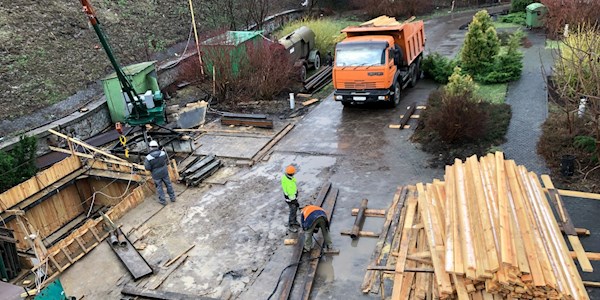Partnership. Expertise. Commitment.
Our industry experts provide insurance coverage, services and solutions tailored to meet your specific needs.

Persistent and unpredictable weather systems with heavy rainfalls increase water and moisture risks for businesses — a particular pain point for construction projects. Taking steps to avoid the negative impacts can save delays and unnecessary costs. Here we outline the key points for developing a preventative plan.
The effects of heavy rain or water inundation to a construction project include but are not limited to:
The amount of water, what building products/systems are affected and the length of exposure can increase the impacts on construction costs and future occupants.
The key policies for protecting construction businesses in the event of flood, storm or heavy rainfall impacts are:
Some key aspects of these policies to be aware of in consideration of water damage are:
A mitigation plan to address water damage and moisture control can substantially reduce the total cost of risk caused by water during construction. These are some key steps to take.
To gain the right protection and insurance for a construction business or project an industry specialist broker can help ensure you have appropriate cover for your situation.
Gallagher specialist construction brokers hold a considerable portfolio of construction clients, from major works to smaller projects, and our construction insurance specialists are available to advise on key covers tailored to any construction business and project.
Gallagher provides insurance, risk management and benefits consulting services for clients in response to both known and unknown risk exposures. When providing analysis and recommendations regarding potential insurance coverage, potential claims and/or operational strategy in response to national emergencies (including health crises), we do so from an insurance and/or risk management perspective, and offer broad information about risk mitigation, loss control strategy and potential claim exposures. We have prepared this commentary and other news alerts for general information purposes only and the material is not intended to be, nor should it be interpreted as, legal or client-specific risk management advice. General insurance descriptions contained herein do not include complete insurance policy definitions, terms and/or conditions, and should not be relied on for coverage interpretation. The information may not include current governmental or insurance developments, is provided without knowledge of the individual recipient's industry or specific business or coverage circumstances, and in no way reflects or promises to provide insurance coverage outcomes that only insurance carriers' control.
Gallagher publications may contain links to non-Gallagher websites that are created and controlled by other organisations. We claim no responsibility for the content of any linked website, or any link contained therein. The inclusion of any link does not imply endorsement by Gallagher, as we have no responsibility for information referenced in material owned and controlled by other parties. Gallagher strongly encourages you to review any separate terms of use and privacy policies governing use of these third party websites and resources.
Insurance brokerage and related services to be provided by Arthur J. Gallagher & Co (Aus) Limited (ABN 34 005 543 920). Australian Financial Services License (AFSL) No. 238312